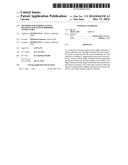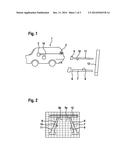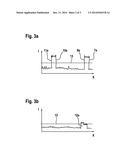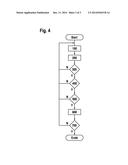Patent application title: METHODS FOR FORMING JOINTS BETWEEN MAGNESIUM DIBORIDE CONDUCTORS
Inventors:
M'Hamed Lakrimi (Oxford, GB)
Assignees:
Siemens plc.
IPC8 Class: AH01B1206FI
USPC Class:
505431
Class name: Processes of producing or treating high temperature (tc greater than 30 k) superconductor material or superconductor containing products or precursors thereof process of making wire, tape, cable, coil, or fiber making multifilament
Publication date: 2014-12-11
Patent application number: 20140364318
Abstract:
In a method for forming joints between MgB2 filaments of
superconducting wires, the MgB2 filaments from the wires to be
joined are exposed, and the exposed filaments are then exposed to a
mixture of magnesium powder and boron powder in a furnace, and the
MgB2 filaments and the magnesium and boron powders are pressed
together in the furnace. The MgB2 filaments and the magnesium and
the boron powders in the furnace are heated, and oxygen that is present
within the furnace is preferentially trapped, and thus removed from the
joint, by providing titanium within the furnace.Claims:
1. A method for forming joints between MgB2 filaments of
superconductive wires, comprising the steps of: exposing MgB2
filaments from the wires to be joined; exposing the MgB2 filaments
to a mixture of magnesium powder and boron powder in a furnace; and
pressing the MgB2 filaments and the magnesium and boron powders
together; and filaments and the magnesium and the boron powders in the
furnace, and preferentially trapping oxygen that is present within the
furnace, and thereby removing oxygen from the joint, by providing
titanium within the furnace.
2. A method according to claim 1 comprising providing the titanium in the furnace as pellets.
3. A method according to claim 1 wherein the furnace is evacuated by a vacuum pump while forming said joint in said furnace.
4. A method according to claim 1 comprising pressing the MgB2 filaments and the magnesium and the boron powders together by applying a pressure, and maintaining said pressure during said heating.
5. A method according to claim 1 comprising pressing the MgB2 filaments and the magnesium and the boron powders together by applying a pressure, and releasing said pressure before said heating.
Description:
BACKGROUND OF THE INVENTION
[0001] 1. Field of the Invention
[0002] The present invention relates to a method for forming joints between magnesium diboride (MgB2) conductors.
[0003] 2. Description of the Prior Art
[0004] Magnesium diboride (MgB2) is used as a superconductor for example as filaments in wires used to make superconducting magnets for imaging systems such as MRI systems. The wire must be cryogenically cooled in order to become superconducting.
[0005] It has been found difficult to make adequate joints between MgB2 filaments. Either the joints do not become superconducting even at the temperature of operation, or the joints become resistive (known as "quenching") at an unacceptably low background magnetic field strength or when a current exceeding an unacceptably low threshold is passed.
[0006] A typical known process for forming MgB2 joints involves exposing MgB2 filaments from the wires to be joined, pressing them together and exposing them to magnesium powder and boron powder in a mould in a furnace at a temperature in excess of or of order 540° C., under vacuum for outgassing. The powders are mixed and pressed to maximize the density of the resultant MgB2 joint. For example, a weight of 2-30 tonnes may be used to compress the powders. The compression aims to prevent the resulting joint from being porous, which would reduce the effectiveness of the joint. The temperature is selected to be slightly below the melting point of magnesium or boron, such that the powders do not actually melt, but may be effectively compressed. The elevated temperature ensures that the reaction to produce MgB2 continues at a reasonable rate.
[0007] This process results in the deposition of MgB2 on the filaments, providing a joint comprising MgB2 from the filaments of one wire to the filaments of the other wire. In alternative methods, the pressure may be maintained during the heat treatment step, or the pressure may be released once the powders have been compressed, and before the heat treatment step.
[0008] In such methods of preparation, the powders are typically made up of particles of approximately 25 μm diameter. During the heat treatment step, the Mg and B react together to form a layer of MgB2, about 2 to 5 μm thick, on the surfaces of the Mg particles. Superconduction between the MgB2 filaments of the joined wires takes place through these surface layers of MgB2. The compression step is required to ensure that the particles are in close contact, to provide an effective conduction path. The heat treatment is carried out at a temperature below the melting point of either Mg or B, but at a high enough temperature that the reaction to create MgB2 occurs at a reasonable rate.
[0009] In a typical MgB2 superconducting wire, several MgB2 cores are provided, each sheathed in a protective layer, for example layer of iron, or niobium, or MONEL® alloy. The sheathed cores are then encased in a copper outer to provide mechanical strength and an alternative electrical pathway in case of quench in the MgB2 cores. The sheaths are necessary to prevent the MgB2 cores from reacting with the copper outer, and to provide mechanical strength to the cores during manufacture of the wire. MgB2 is known to be brittle, and will shatter if bent too far.
[0010] Conventional jointing processes have included stripping the protective layer from the cores. The exposed cores are then placed in the mould with magnesium and boron powders, as described above, for jointing. Alternatively, the protective layer is not stripped, but the filaments, each comprising an MgB2 core and a protective layer, are cut, or shaved, at a shallow angle such as 2°-5° angle, to expose the core over a relatively large surface area. In an example, the core may be exposed over a length of some 40 mm. These filaments are then placed in a mould with the magnesium and boron powders as described above.
[0011] While theoretically attractive, such MgB2 persistent joints have proven to be very difficult to realize. One of the limiting factors is the amount of magnesium oxides found in the deposited MgB2 of the joint. Joints contaminated with magnesium oxides have been found not persistent, that is to say, not superconducting, even with a background magnetic field of 0T.
[0012] It is believed that oxygen outgasses into the vacuum furnace from magnesium oxides present in the magnesium powder used in the process, and possibly also from the structure of the furnace itself. Magnesium oxide MgO dissociates into magnesium and oxygen at a temperature, much below that typically employed to achieve MgB2 formation according to the method described herein.
[0013] Conventional methods of joining MgB2 wires comprise the steps of:
[0014] exposing at least one MgB2 filament in each of the wires to be joined;
[0015] placing the exposed MgB2 filaments in a mould;
[0016] adding magnesium and boron powders into the mould;
[0017] mechanically pressing the powders in the mould; and
[0018] heat treating the filaments and powders to produce an MgB2 joint extending between the filaments of the joined wires.
SUMMARY OF THE INVENTION
[0019] The present invention relates to the final step in the method described above. During the heat treatment step, any free oxygen within the furnace is likely to react with the magnesium powder to form MgO, or a complex magnesium-boron-oxide.
[0020] The present invention provides a method for forming joints between MgB2 conductors in which oxygen is effectively removed from the environment within the furnace while the joints are formed, as defined in the appended claims.
DESCRIPTION OF THE PREFERRED EMBODIMENTS
[0021] According to the method of the present invention, titanium is provided, preferably in the form of pellets, within the furnace while the joint is formed. The titanium acts as a getter of oxygen, and any oxygen which may be present in the furnace will be preferentially trapped by the titanium to become titanium oxide, rather than reacting with the magnesium. The titanium is placed in close proximity to the jointing mould, so that the oxygen is quickly and efficiently removed from the joint. The entrapment of free oxygen by the titanium avoids any contamination of the joint with magnesium oxides, leading to persistent MgB2 joints which are acceptably tolerant of background magnetic field strength and current density.
[0022] The remaining stages in the method are unchanged. The method of the present invention may be applied in arrangements in which mechanical pressure is maintained during the jointing process, or in arrangements where the mechanical pressure is released during jointing.
[0023] The furnace may be evacuated by a vacuum pump, preferably to the order of 10-7bar (0.01Pa), or may be provided with an inert flush arrangement to reduce the amount of oxygen which needs to be trapped by the titanium.
[0024] Accordingly, the present invention provides the use of titanium pellets to capture any oxygen which may be present during the heat treatment of magnesium and boron powders to realize MgB2 formation for the jointing of MgB2 wires. Preferably, a high-vacuum pump is provided for evacuating the furnace, and this will remove some of the oxygen. Remaining oxygen will be preferentially trapped by the titanium, avoiding the formation of magnesium oxides.
[0025] Although modifications and changes may be suggested by those skilled in the art, it is the intention of the inventor to embody within the patent warranted heron all changes and modifications as reasonably and properly come within the scope of his contribution to the art.
User Contributions:
Comment about this patent or add new information about this topic:
| People who visited this patent also read: | |
| Patent application number | Title |
|---|---|
| 20140365315 | SYSTEMS AND METHODS FOR CUSTOMIZING SERVICES TO USERS ON MOBILE TECHNOLOGY PLATFORMS USING PERSONAS |
| 20140365314 | MACHINE LEARNING SYSTEM TO OPTIMIZE TARGETING CAMPAIGNS IN ON-LINE BANKING ENVIRONMENT |
| 20140365313 | PROVIDING PERSONALIZED RECOMMENDATIONS RELATING TO GROUP ACTIONS |
| 20140365312 | MOBILE DEVICE GROUP APP PROVIDING CUSTOMIZED INTERACTIVITY |
| 20140365311 | Associating Advertisements with Events |




